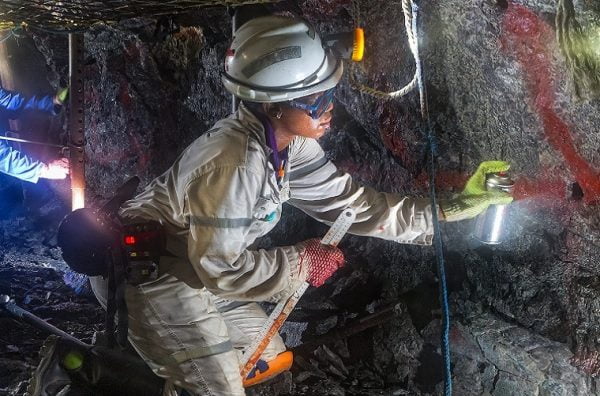Women Push For Participation In US$12billion Mining Roadmap

The government urged to ring-fence opportunities for women by reserving extractive sector quotas for women and provides systems that ensure the inclusion of women in the US$12 billion mining strategy.
Speaking during a virtual discussion on women participation in the mining sector towards achieving the 12 billion economy facilitated by Zimbabwe Allied Diamond Workers Union (ZIDAWU) women said they are being left behind.
Government, they said must provide tax incentives to companies which provide upstream female employment, decree minimum quotas of women employment, and develop local procurement plans which guarantee equal access and opportunities for women.
Abby Musiyazviriyo of Marange Development Trust (MDT) said with the abundance of available upstream and downstream linkages in the mining sector, women can also carve niches for themselves.
She said, “Vast upstream, downstream linkages in the mining value chain provides for investment in local content development, power, technology, infrastructure technology and improvement of livelihoods for sustainable development,”
Musiyazviriyo said the government must pursue (or amend existing) policies that incentivize investors which maximize linkage creations that promote women empowerment and impose tax restrictions on those that outsource such linkages.
She said in the continent there are abundant case studies including in South Africa, Botswana, and Nigeria on how governments can leverage upstream and downstream linkages, promote local content development, and promote women participation in mining.
“These linkages are contextual applying to a specific area at a specific time and the opportunities that they present are highly dependent on the existing know-how, expertise, and legal framework in the areas where extraction of minerals is taking place.
“In seeking to develop these linkages, pro linkage policies should be crafted or the existing policies
reformed to stipulate that companies must source domestic suppliers, impose import restrictions to
incentivize downstream processing.
“Government should avoid using incentives like tax holiday and granting subsidies that are contingent
to the sourcing of goods domestic. Furthermore, government should be at the fore of linkage creation
from the extractive sector.
“Policymakers should understand the variegated ways in which women are excluded and adversely
incorporated in the mining sector so that their presence can be improved and women can continue
to be visible and their representation in the sector can also improve,” said Musiyazviriyo.
Sophia Takuva a small scale miner from Zvishavane says providing quotas for women in the mining
value chain alone, without formalization of artisanal mining, may not be adequate to stimulate
inclusive growth towards the US$12 billion target.
She argues that while women can significantly contribute in linkages in the mining sector,
formalization will remove barriers of entry and ensure that government reaps high yields from low
hanging opportunities like gemstone mining.
“There is a need to open these areas for pegging and capacitate small scale miners with necessary
equipment as soon as they finish registration and knowledge on basic gemstone mining and
processing (gemstone finishing, cutting, and polishing).
“In Chiadzwa for example, diamond eld exploration of diamonds shows that there are reserves with
low yields and grades, also there are gemstones like zircon, quarts and corundum these gemstone
rich areas must then benet local communities.
“We can reserve these areas for women and also ensure that beneficiation mechanisms are put in place to create employment and empower women to actively participate in value edition while showcasing their crafting skills. This will bring in more revenue and selling of finished products brings more value to the minerals,” she said.
Takuva said the government’s mines and mineral procedures must also be computerized and open up reserves for locals to peg and mine, with quotas reserved for women only, under close monitoring of bigger mining corporations.
She said to achieve this transparency and accountability are key enablers to ensure exploitation of mineral resources gives birth to benefits for local developmental needs and ensure sustainable local content development.
“Women are there in the mining sector but they may be at the periphery that sometimes they may
not be recognized because of the multi-tasking nature of mining.
“Although women and youth are at the periphery in the ASM sector they play a great role and can
bring change if supported, these two groups face challenges with registration and this is fueled by a
corrupt system that is slow in facilitating necessary processes in time.
“There is need for a computerized and accessible mining cadastre for transparency on licensing, we
have artisanal gemstone miners where are the gemstones sold to, obliviously to the black market and
the country loses,” said Takuva_263Chat


